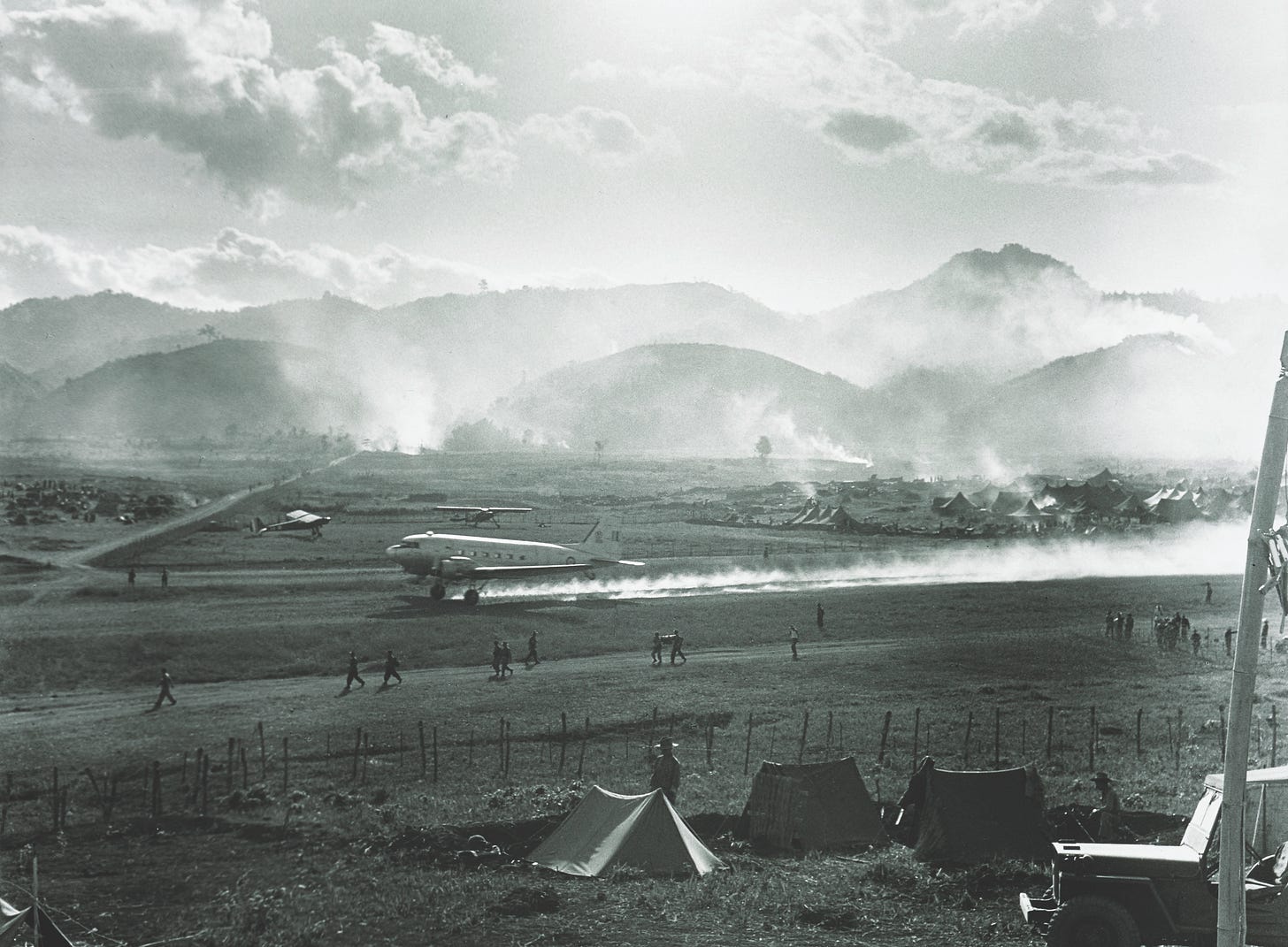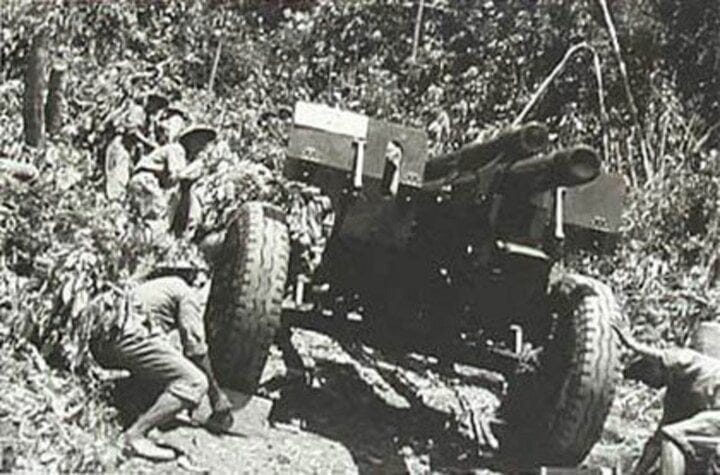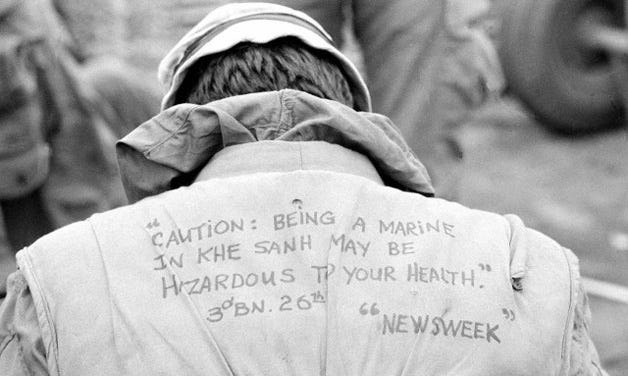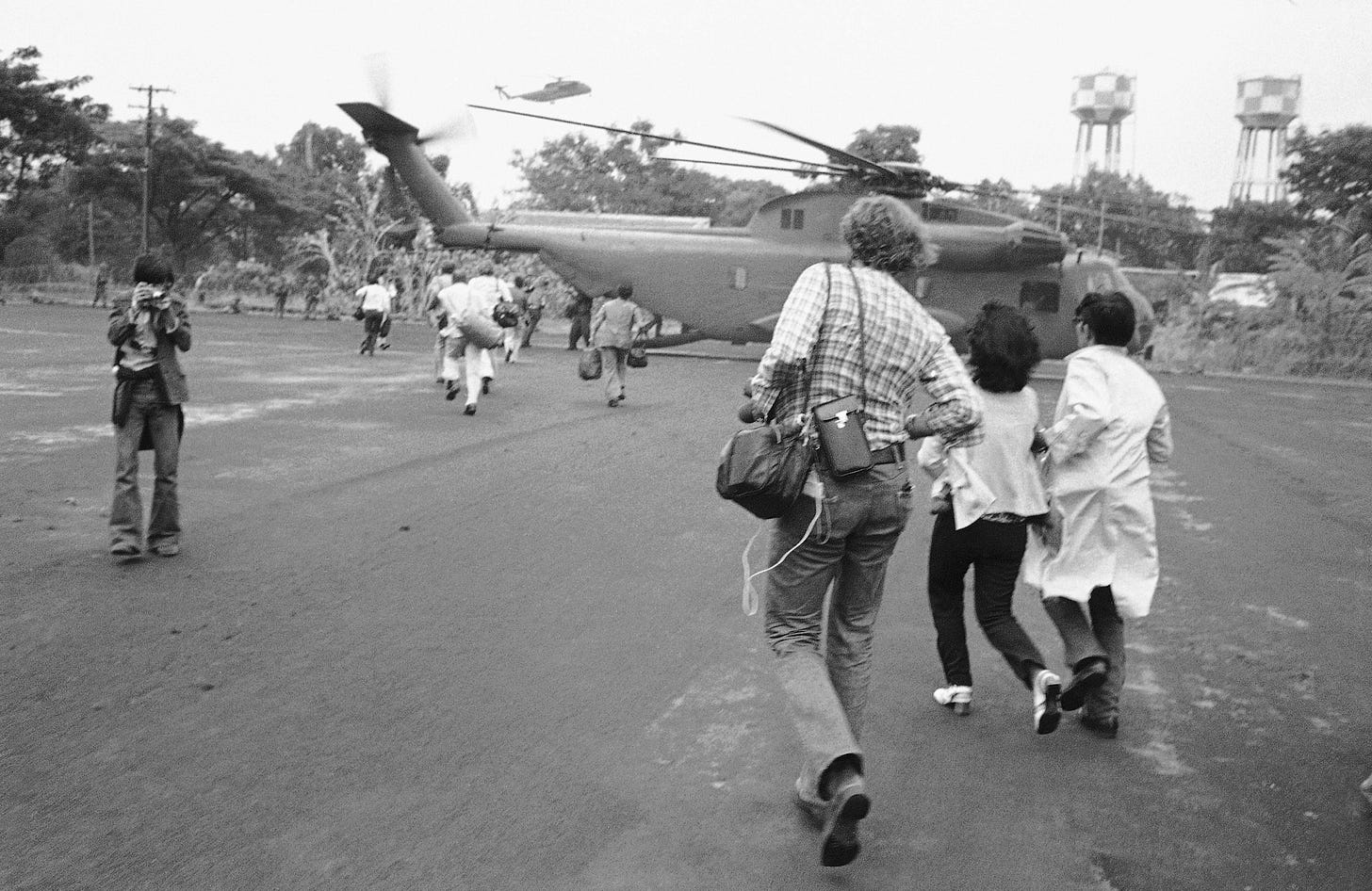YWR: The Vietnam Set-up
Sorry, but this has to be appreciated.
From Na San to Dien Bien Phu
It’s 1952. French general Raoul Salan was frustrated with the Viet Minh’s guerrilla tactics. France’s military was obviously superior, but he could never force the Viet Minh into a direct fight. He needed a way to force them into the open.
And he had an idea.
La défense du hérisson. The hedgehog defence.
General Salan constructed a heavily fortified air-base (‘aero-terrestre’) in a remote area of Northwest Vietnam. The valley of Na San was deep in Viet Minh territory. The only way to access the base was by plane.
The idea was insert this isolated base deep into Viet Minh territory, which would interfere with their Laos operations and force them into attacking a heavily defended position. If everything worked out as planned the Viet Minh should sustain heavy casualties. No more guerrilla hit and run. This would be Viet Minh running into interlocking machine gun positions and barbed wire.
In late November the attacks begun. For 7 nights the Viet Minh threw wave after wave at the fortifications and almost overran the French, but close air support pushed the Viet Minh back. By November 30th the Viet Minh had suffered large losses and retreated.
This was exactly what General Salan had anticipated. The Hedge Hog Defence was a success. The Battle of Na San was a win.
In 1953 Salan was sent back to Paris and replaced by General Navarre. Navarre was under tremendous pressure to show some positive momentum in the war. Navarre decided to try the Hedgehog defence again, but bigger, in a valley called Dien Bien Phu near the Laos border.
In November 1953 French paratroopers started dropping into Dien Bien Phu to build the fortifications.
The valley had an old airstrip built by the Japanese which the French intended to use to supply the base. On the edge of the valley were small hills. Then further out were steep mountains. The French built their fortified base and occupied the high ground on surrounding small hills. The assumption was the mountain farther out were too steep and rugged to occupy.
And this was the tactical mistake that led to disaster.
General Giap, leader of the Viet Minh, in a now famous effort, dragged artillery pieces up to the top of the mountains and built caves in which to hide them. Over the next 4 months the French built up their defences and deployed over 10,000 troops to the base. Meanwhile, General Giap, stockpiled ammunition and surrounded the French with his artillery.
In March 1954 the battle began. The fighting would go on for 2 months, but right from the start it was hopeless. The Viet Minh were able to rain artillery down on the base non-stop. This made it harder and harder for planes to resupply the base or evacuate the wounded. The Viet Minh slowly strangled the French army caught in the bottom of the valley. At night the Viet Minh would raid the French hill top positions continuously wearing down the defenders.
Early on the French had an uncomfortable feeling they were in a bad situation and might be trapped. Their air support was slowly being cut off. The planes could land and taxi only for brief moments before the artillery shelling would begin and they had to quickly take off again. Reinforcements were parachuted in from low altitude. The valley was a death trap with no way out. Colonel Piroth, the commander of the French artillery realised the hopelessness of the situation and committed suicide just days into the battle.
In May 1954 the inevitable happened. The Viet Minh decisively overran the camp. Over 2,000 French soldiers died, and 10,000 others begged for their lives. They had nowhere to go. 10,000 prisoners marched into the jungle. Only 3,000 ever returned to France.
Dien Bien Phu was a nightmare. The worst routing in French military history and maybe of all time.
Shortly afterwards the French government divided the country in two at the 17th parallel and conceded North Vietnam to the Viet Minh.
Based on Valley of Death by Ted Morgan
From Dien Bien Phu to Khe Sanh
In 1967 the US Military faced a similar problem. The North Vietnamese Army (NVA) were playing hit and run and avoiding large scale firefights. Like before the Viet Cong were using neighbouring Laos as a transportation route to move equipment and troops into Southern Vietnam.
How to disrupt this supply chain along the Laos border and also force the NVA into an set-piece firefight where the US could decisively win?
Like Geneal Salan before him General Westmoreland had an idea. He decided to expand what was then a small special forces camp near the border with Laos, the Khe Sanh Combat Base, into a major military base with thousands of US Marines. Khe Sanh had only 1 road in, Route 9, and an airstrip.
Yes, Khe Sanh would partially disrupt NVA supply lines, but the real strategy was to lure the NVA using Khe Sanh as bait. Westmoreland wanted to tantalise the Viet Cong with another Dien Bien Phu opportunity. 6,000 US Marines at an isolated outpost which could be easily surrounded. Surely, they would go for it. The surprise for the NVA would be massive US air support from helicopter cavalry and B52 bombing runs on NVA positions. It would it be their Dien Bien Phu not his.
It was a risky move though and President Lyndon Johnson famously made Westmoreland promise ‘in blood’ that Khe Sanh would not turn into a political embarrassment.
In January 1968, as expected, a large force of NVA surrounded Khe Sanh. The NVA attack was part of a broader nationwide Tet Offensive.
The Battle for Khe Sanh went on for 4 months and tested the Marines to limit. Intense close range B52 bombing runs were necessary to maintain the US positions.
In the end it was a draw.
The NVA withdrew, but it was a Pyrrhic victory. Shortly afterwards the US military abandoned the base. In reality Khe Sanh had little strategic value and was difficult to continuously defend.
In hindsight the Battle for Khe Sanh was a turning point in the war. The US realised it was in a quagmire. It was not going to win the war easily, and was expanding enormous resources and soldiers to defend remote bases with no value.
The war would continue, but emotionally the US wanted out. By 1973 the US military pulled out of South Vietnam and left the country’s defence entirely to local army. That didn’t last long. In April 1975 the South Vietnamese president fled to Taiwan and the resistance collapsed.
After Decades of fighting both the French and Americans Vietnam was united, independent and fully communist.
But post-war Vietnam was also one of the poorest countries in the world with a GDP per capital of $238.
Decades of fighting had left it a broken mess.
The Vietnamese might have been exhausted, but they had another battle ahead.
An economic one.
From Quagmire to Tiger
Something miraculous happened between 1975 and 2025.
In the 1980’s Vietnam faced hyperinflation, food shortages and declining aid from Russia. The situation was dire. Vietnam had to get practical. No one was coming to save them. Then in 1986 the government launched the Doi Moi reforms to loosen government control of the economy, promote private business and privatise ownership of agriculture.
These reforms got Vietnam back on its feet.
Then in 2011 the 10th People’s Congress launched another wave of reforms to boost the economy even more.
SOE Reform: Further restructuring of state-owned enterprises (SOEs) to reduce corruption, improve efficiency, and introduce competition.
Private Sector Development: Recognition of the private sector as a key engine of growth.
Anti-Corruption Focus: Renewed calls for rooting out corruption within the party and public sector.
Administrative Reform: Steps toward a more professional and transparent civil service.
Innovation & Technology: Emphasis on science and technology as a growth driver.
The result.. Vietnam boomed.
GDP per capita went vertical.
Today Vietnam is the fastest growing country in the world.
Foreign investment went from this:
To this:
Folks…. it’s a miracle.
Vietnam is benefitting from steady economic reforms focused on reducing government involvement in the economy and prioritising private sector led growth. And like China Vietnam has invested into ports, rail, power and telecommunications.
This high quality infrastructure has made Vietnam a big winner in the China + 1 trend. US companies are looking for a China alternative and that alternative is often Vietnam. For example, Nike now exports more from Vietnam than China. Nvidia is opening a research center in Vietnam and its Taiwanese supply chain is investing in Vietnam too.
We went from fighting each other to loving each other.
Vietnam’s tourism industry is also a strong point and in 2025 should hit a new record for arrivals (18 million). Vietnam is the new Thailand. More authentic with fewer morons and Australians with babies.
So how do we make money on this?









